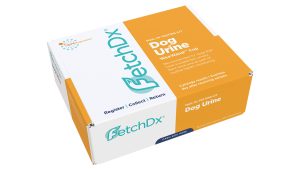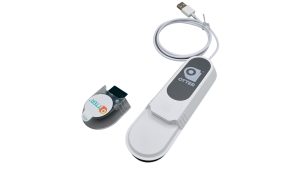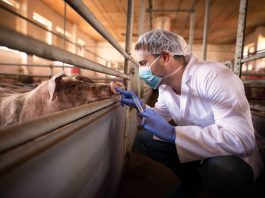The lifespan of existing antibiotic medications can be extended by utilising diagnostic testing more frequently and thoughtfully in pet care.
The 2024 survey results from the American Pet Products Association show that 97% of pet owners consider their pets to be part of the family. Pets are spending more time inside the house and in close contact with humans. The expected level of healthcare for pets is also rising with these trends. As a result, dogs and cats are increasingly at risk of resistant microbial infections due to the widespread use of antibiotics.
Antibiotic stewardship is the practice of using antibiotics responsibly to maximise their effectiveness, reduce the development of resistant strains, and ensure they remain effective in the long term. While most people associate antibiotic stewardship with human medicine, it is just as crucial for animal health, particularly for our pets.
The growing problem of antibiotic resistance
Antibiotic resistance occurs when bacteria evolve to survive exposure to antibiotics, rendering these drugs less effective or even useless. The World Health Organization (WHO) has recognised antibiotic resistance as one of the top ten global public health threats, and in 2024, the United Nations General Assembly produced a declaration document outlining, at a high level, what needs to be done to reduce the number of human deaths associated with bacterial antimicrobial resistance (AMR) annually by 10% by 2030. Part of the declaration includes an acknowledgement of the bi-directional spread of zoonotic disease and antimicrobial resistance between humans and animals.
In veterinary settings, particularly with companion animals, the problem of antimicrobial resistance is magnified by several factors. First, pets often share living spaces with their owners, which can increase the risk of transferring resistant bacteria between animals and humans. Second, misuse or overuse of antibiotics in pets can thus contribute to the spread of resistant strains that may eventually affect both animal and human populations. Pet owners are often unaware of the consequences of antibiotic misuse, such as not completing prescribed courses or demanding antibiotics for conditions that do not require them. This highlights the need for informed stewardship practices within the pet healthcare industry and pet owner education to minimise resistance risks. However, antibiotic stewardship in pets faces unique challenges that can complicate efforts to manage antibiotic use effectively.
Diagnosis and treatment of infections is complex
Unlike humans, pets cannot describe their symptoms, which can make identifying the cause of illness challenging. Veterinary professionals rely on physical exams, laboratory tests, and other diagnostic tools to identify infections. However, diagnostic procedures are increasing in cost, leading some pet owners to opt out of necessary testing. Without clear diagnostic information, veterinarians may feel pressured to prescribe antibiotics as a precaution, potentially leading to unnecessary or incorrect antibiotic use.
Even when antibiotics are correctly prescribed, ensuring that pet owners follow the full course of treatment can be challenging. If owners stop giving antibiotics once their pet appears to feel better, the infection may not be fully eradicated, increasing the risk of resistance. Ideally, the pet returns for a recheck when the treatment is completed.

However, customer survey data shows that this often does not happen because the pet owner does not have time in their schedule or because they cannot afford the costs of another visit. This is where FetchDx® mail-in testing kits from QSM Diagnostics® can be beneficial. These are kits that veterinarians prescribe and provide to pet owners at the initial visit. The pet owner collects a sample after treatment is completed and sends it to QSM Diagnostics for analysis. The results are reported to the veterinarian. If the infection continues to persist, then the veterinarian can proceed with additional steps, but if the issue is resolved, then the pet owner saves a visit.
Limited drug options for animals
There are fewer antibiotics approved for veterinary use than for human use. This limited selection can complicate treatment options, especially if an infection is resistant to the available drugs. Moreover, some antibiotics widely used in human medicine are inappropriate for animals due to differences in metabolism and toxicity. This makes it essential to use the antibiotics that are available for pets judiciously to preserve their efficacy.
Principles of responsible antibiotic use in pets
Antibiotic stewardship for pets is based on similar principles to those used in human healthcare: appropriate prescribing, correct dosing, adherence to treatment plans, and infection prevention. The American Veterinary Medical Association (AVMA) and veterinary associations in other countries have established and published guidelines for judicious use of antimicrobials that are specifically for animals.
Diagnostic testing options
Whenever feasible, culture and sensitivity (C&S) testing should be performed to identify the causative bacteria and determine the most effective antibiotic. This targeted approach reduces the likelihood of using unnecessary antibiotics and can enhance treatment success.
The value proposition is that, although testing may increase initial treatment costs, it ultimately leads to better outcomes and a lower risk of resistance, benefiting both the pet and the owner. However, the cost of C&S tests has increased significantly in the last decade, and it is becoming increasingly difficult for pet owners to justify the cost.
The other major limitation of C&S testing is that it takes several days to complete. No one wants to delay treatment until results are available. As a result, antibiotics are nearly always prescribed at the time of the visit, and the prescription is changed later if needed. The latest studies show that the frequency with which a prescription change is required is increasing because of growing antibiotic resistance.
C&S testing requires colonies of bacteria to grow on culture plates that are then analysed biochemically and by exposure to antibiotics. This process takes 24-72 hours to complete. The equipment and maintenance required to ensure accurate C&S results is expensive, and as a result, only major hospitals and laboratories can afford it. Because of this, there is an added delay in transporting the samples from the local clinic to these facilities.
One way to overcome the time delay is to have the pet owner collect the sample and send it to a lab for analysis at the first signs of infection. A 2023 survey of 4,000 veterinary clinics shows that the average wait time in the United States for an appointment with a veterinarian is four days. A veterinarian who suspects an infection can provide a FetchDx mail-in testing kit to the pet owner to get the process started before the scheduled visit. Given the wait time for an appointment, in many cases, the results will be available when the pet is being examined.
In human medicine, genetic testing is now starting to be used for the identification of infectious diseases. Polymerase Chain Reaction (PCR) testing is the most common type of genetic testing. PCR is most cost-effective when it is used to identify the presence of one specific pathogen. For example, PCR can detect if Covid virus RNA is in a sample in about one hour. There are new variants of PCR testing that can provide results in as little as 15 minutes, but they are not yet commercially available. Unfortunately, many different species of bacteria can cause an infection, making PCR testing a complex and expensive option for most infection testing.
Next Generation Sequencing (NGS) is another type of genetic test. With NGS, all the genetic material in a sample is sequenced, and the results are compared against a database to determine which pathogens are present. NGS can also be used to determine which antibiotic-resistance genes are present in the sample. NGS testing takes a few days to complete, and the instruments are expensive.
Rapid biochemical and antibody-based test strips are available for many bacterial pathogens. While they do not offer all the information that C&S or genetic testing provide, they do help guide diagnosis and treatment for bacterial infections. Test strips can lack sensitivity, and the results are sometimes difficult to interpret, so care needs to be taken with the results. These tests are relatively inexpensive, and veterinary clinics can benefit from offering these options to clients.

QSM Diagnostics has developed an instrument that provides bacterial identification based on biomarkers that are intrinsically produced by bacteria. The Otter® eQ platform measures the quantity of quorum sensing molecules (QSMs) that are present in a sample. Each bacterial species produces its own unique QSMs that can be used for identification. The sample is simply added to the disposable cartridge and then inserted into the instrument. Chemical reactions take place on a cartridge to measure the quantities of different QSMs in the sample, and the results are displayed on a computer screen. The instrument and disposable test cartridges are economically priced. While the Otter eQ does not provide a complete C&S, the tests are sensitive, the results do not require interpretation, and the information helps guide antibiotic treatment. The Otter eQ instrument is currently only available for veterinary use, but the technology can be used in human healthcare in the future.
Strategies for promoting antibiotic stewardship in pets
Effective antibiotic stewardship requires a concerted effort from veterinarians, pet owners, and policymakers.
Educating pet owners is one of the most powerful tools for promoting antibiotic stewardship. Pet owners should understand that not all infections require antibiotics and that misuse can lead to resistant infections that are more difficult and expensive to treat. Veterinarians should take the time to explain why certain infections do or do not warrant antibiotics, the importance of completing prescribed courses, and how to recognise side effects or complications. Diagnostic testing helps veterinarians convince pet owners when antibiotics should be used. Additionally, providing diagnostic tests as part of the treatment plan helps improve compliance and outcomes.
While collecting samples in the clinic and sending them for C&S testing is the gold standard of care, providing a spectrum of options based on the pet owner’s situation can be potentially even more effective at reducing the misuse of antibiotics and curbing the spread of resistance.
Collaboration between veterinary and human health sectors
The concept of ‘One Health’ emphasises the interconnectedness of human, animal, and environmental health. Collaboration between veterinarians, human healthcare providers, and public health agencies can enhance efforts to combat antibiotic resistance. Information-sharing about resistant strains, joint research initiatives, and coordinated public health campaigns can strengthen antibiotic stewardship across sectors. This cross-disciplinary approach is essential for managing antibiotic resistance effectively, as resistant bacteria do not respect species boundaries.
Conclusion
Antibiotic stewardship for pets is essential for safeguarding the health of animals, humans, and the environment.
There are many articles about responsible antibiotic use, however implementation is challenging if diagnostic evidence is not provided before medication is prescribed. The mission of QSM Diagnostics is to provide bacterial testing results to veterinarians quickly and cost-effectively to help guide diagnosis and treatment.
Responsible antibiotic use can slow the progression of antibiotic resistance, preserving these life-saving drugs for future generations. While antibiotic stewardship in veterinary medicine faces unique challenges – such as diagnostic limitations, owner expectations, and a limited selection of drugs – adopting targeted strategies can help overcome these obstacles. With increasing pet ownership and the rising costs of veterinary care, a spectrum of testing options needs to be available that assist with the diagnosis and treatment of infections.
As antibiotic resistance continues to threaten global health, everyone involved in pet care has a role in promoting antibiotic stewardship. Through conscientious efforts and continued vigilance, veterinarians, pet owners, and policymakers can ensure that pets receive the best possible care without contributing to the growing problem of antibiotic resistance.
Please note, this article will also appear in the 20th edition of our quarterly publication.









